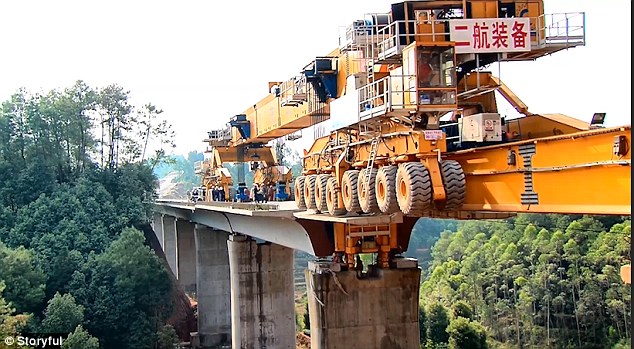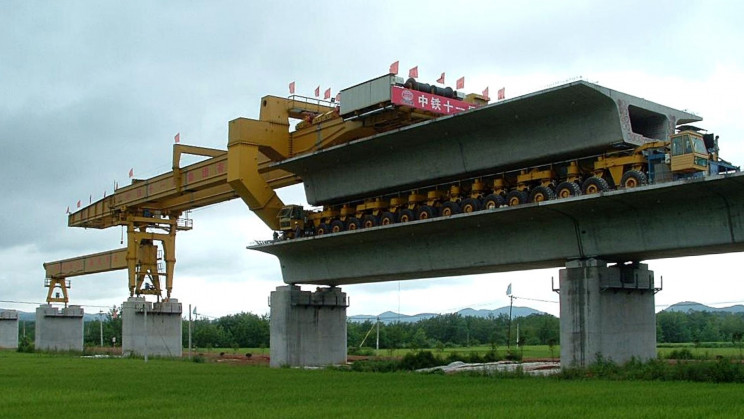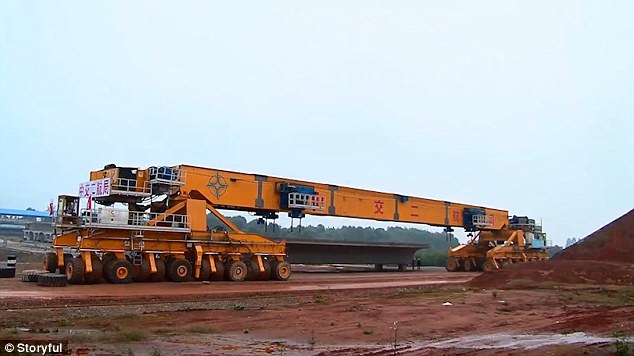While considering Chinese engineering, we think of their architectural prowess and their baffling array of bridges across the country. With the Belt and Road Initiative launched in 2013, China demonstrated that it is the real successor to the Silk Road tradition. The project includes land-and-sea routes that connect 70 countries.
But have you ever considered how they managed this project in a much shorter amount of time while spending less money and using fewer resources?
Of course, engineering expertise is required, but China had another cool piece up its sleeve. The SLJ900/32, aka the Iron Monster, is a bridge-building machine developed by the Beijing Wowjoint Machinery Company and designed by Shijiazhuang Railway Design Institute.

This massive machine, weighing in at a whopping 680 tonnes, completely automates the bridge-building process, saving both time and money. It lifts, carries, and builds prefabricated and full-length track sections at 3.1 mph (5 km/h), eliminating the on-site assembly process.
The Silk Road transformed China into a geoeconomic prowess, inspiring the country to launch the Belt and Road Initiative, connecting Asia, Africa, and Europe. The Silk Road Economic Belt connects land-based East Asia, South Asia, Central Asia, Russia, and Europe, whereas the Maritime Silk Road connects China’s coastlands to Europe.
As a result, Iron Monster was created to connect three continents via a marine and land network. The Yibin Jinsha River Railway Bridge, the world’s longest road-rail steel arch bridge project, is one of the examples of SLJ900/32. Yibin has reduced the 12-hour journey between the provinces of Sichuan and Guizhou to three hours. Another real-life example is the high-speed rail project linking Inner Mongolia to the rest of China.

The construction starts with the beams being transported to the installation point, where they will be connected to a pillar. After that, the machine is positioned to the first pillar and extended to the second, anchoring to it and placing the beam with a pneumatic structure. The process is then repeated with the new segment in the ride by SLJ900/32.
Despite requiring far fewer workers, Iron Monster still demands a crew oversee the entire process and clean and maintain its various bits. When the machine sets the segment, the crew’s job begins, and the process is repeated until the bridge is finally completed.

The machine has been demonstrated to be effective due to the limited human resources, the elimination of costly structural support, and the increased project completion rate. Furthermore, since the machine is so heavy, the bridge is often designed to take up weight greater than the machine itself, resulting in a very heavy-duty bridge. It can be used to build roads and rail bridges for China’s massive railway system.
Unfortunately, this machine is similar to a long candle wick, which provides the brightest light and burns out faster than usual. The machine has a lifespan of 1000 spans (roughly four years on average), after which it is taken out of service.


